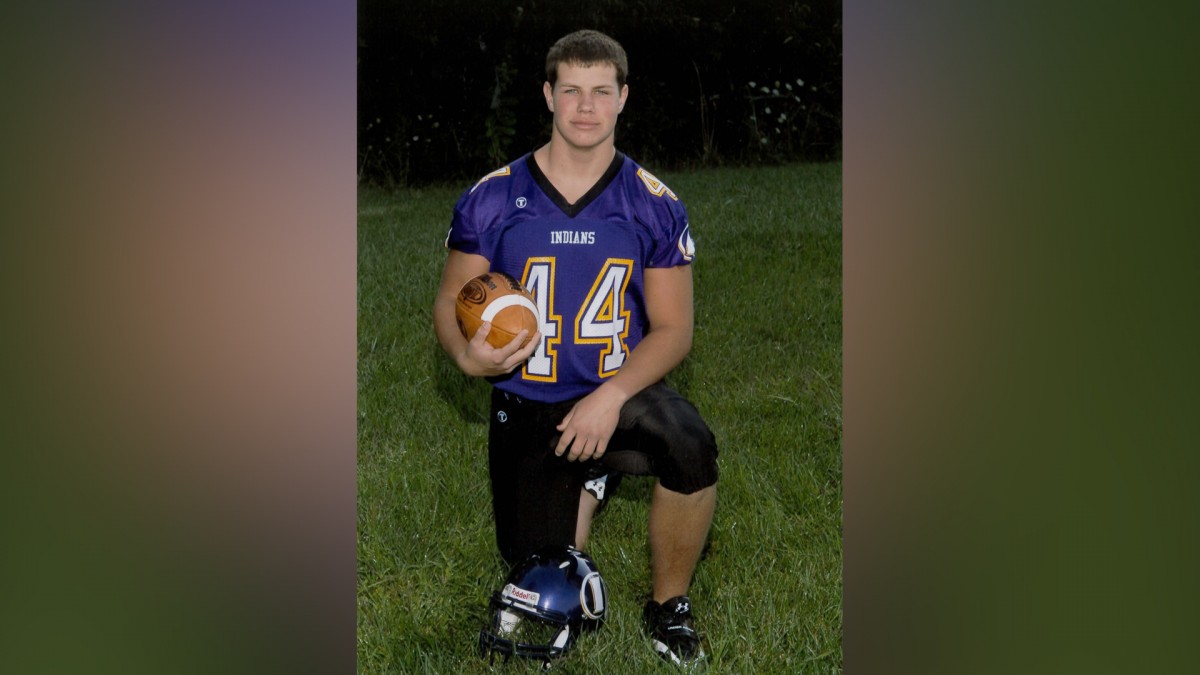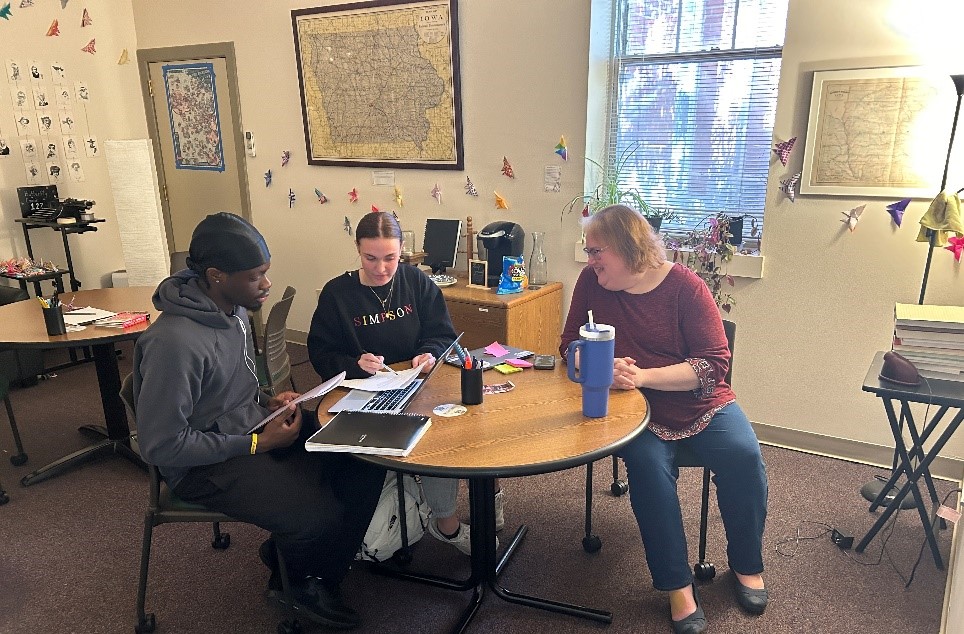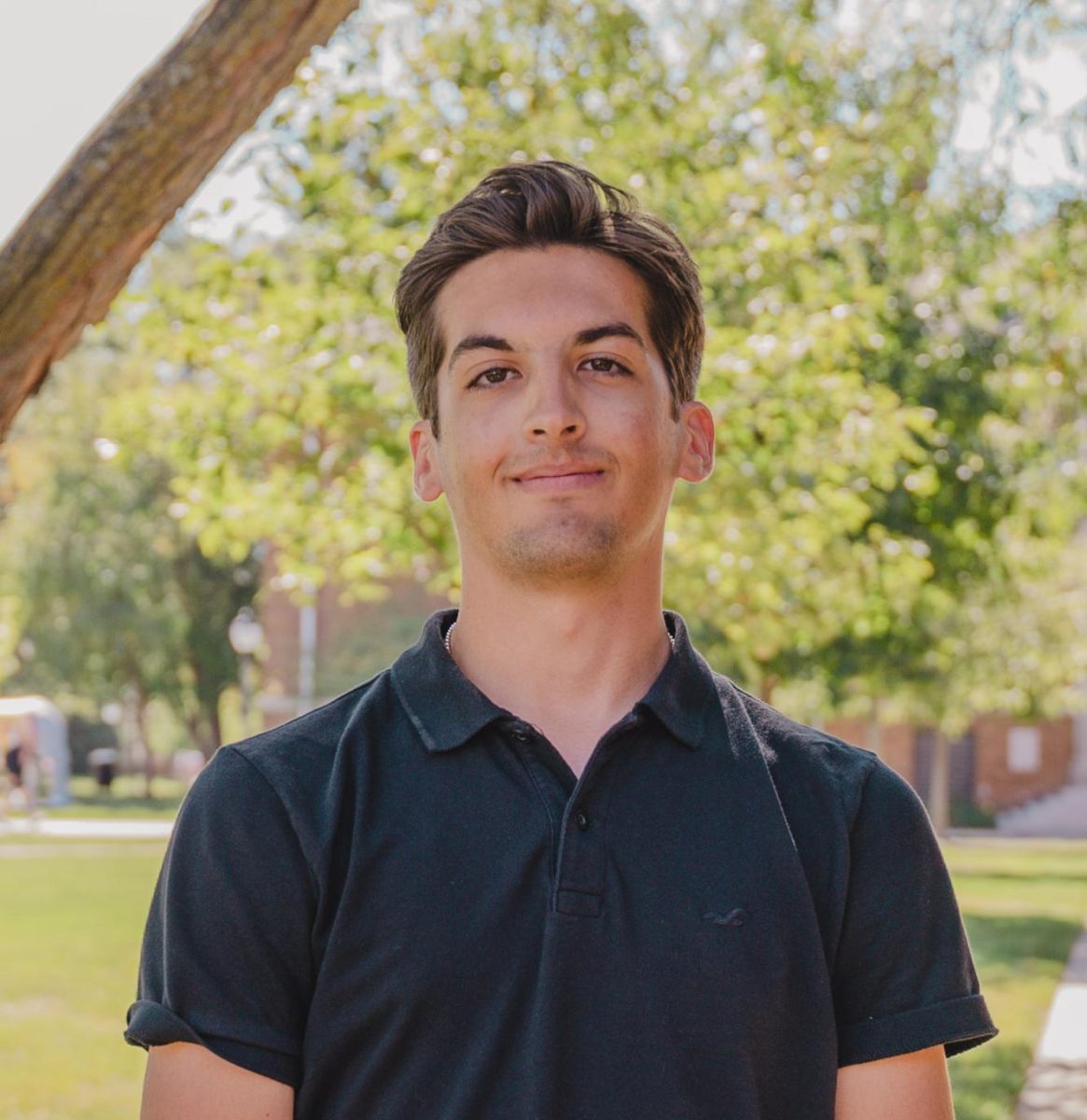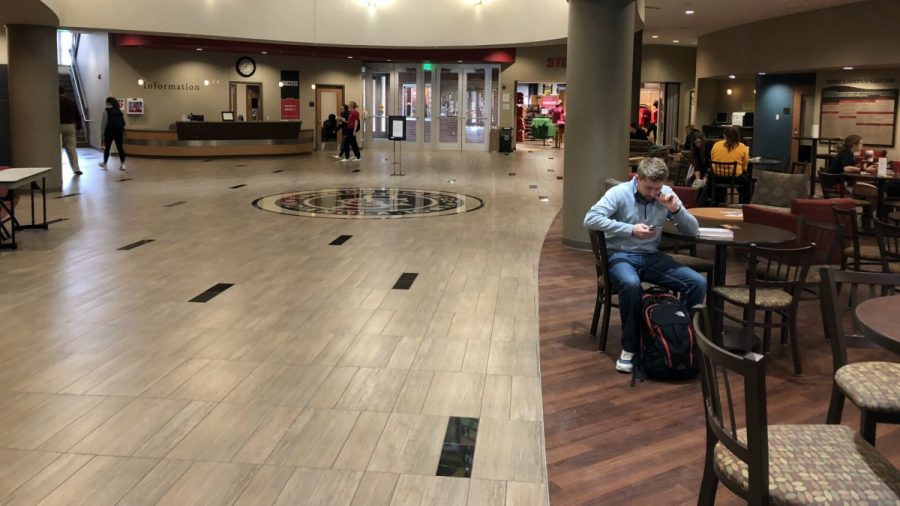After ‘silent struggle,’ family clings to renewed hope
August 18, 2017
This article was prepared by the Simpsonian’s Jetstream Team, consisting of Alex Kirkpatrick, Emily Carey, Randy Paulson and Austin Hronich. It was written by Kirkpatrick.
INDIANOLA, Iowa — His passion ultimately killed him.
And yet, 24-year-old Zac Easter of Indianola knew the love of football shouldn’t be stripped away from young men just like him. He wanted his story to make a difference in the lives of others.
He called six years of suffering from chronic traumatic encephalopathy, or CTE, his “silent struggle” — all of which was meticulously chronicled in his journals.
Zac knew CTE could only be diagnosed after death. So just after midnight on Dec. 19, 2015, he drove down to Lake Ahquabi and shot himself in the heart, making sure not to damage his brain. This would be key in fueling a nationwide forum on the widely discussed disease.
This is Zac’s story and his dying wish.
WHAT IS CTE?
CTE is a progressive neurodegenerative disease that is caused by repeated subconcussive hits or severe blows to the head. It leads to the build-up of an abnormal protein called tau, which accumulates in the brain and kills brain cells. The changes in the brain don’t take effect until months, years or even decades after an athlete ceases activity.
The tau protein tends to develop in regions of the brain highly affected by severe trauma.
It’s been known to affect boxers since the 1920s, but for other contact sports with which the disease has been associated, it’s relatively new. Dr. Bennet Omalu, who was portrayed by actor Will Smith in the movie “Concussion,” was the first medical professional to discover CTE in 2002 in former NFL player Mike Webster.
Since then, a number of high-profile suicides in athletes have been known to have had CTE, including professional football players Tyler Sash, Dave Duerson and Junior Seau.
Research has shown that more than half of NFL players have reported a concussion on the field, and one in four recall having had at least three. Further, one in five players with multiple concussions says they suffered from depression, which is three times the rate of players who haven’t suffered concussions.
Other common symptoms include, but are not limited to:
- Memory loss
- Confusion
- Impaired judgment
- Impulsive behavior
- Aggression
- Thoughts of suicide
Concussions are obviously nothing new. Back then, it was called “getting your bell rung” when an athlete felt dizzy or felt out of their element. However, it wasn’t considered a concussion until an athlete was knocked out.
But now, this is known to be false. And with subsequent concussions, the symptoms are magnified, as is the risk for hemorrhages or serious brain injury.
CTE can only be diagnosed by postmortem neuropathological analysis because there is no way to use MRI, CT or other brain-imaging methods to properly diagnose the disease, according to Boston University’s CTE Center. Researchers, however, are actively looking for ways to perform tests on the living.
Dr. Ann McKee, director of BU’s CTE Center and neuropathologist at BU School of Medicine, has examined the brains of more than 300 former football players, 200 of which she diagnosed with CTE.
“This can’t be happening to our athletes,” McKee told KCCI. “I think if you play football long enough, your chance of getting CTE is very high.”
It’s not exclusive to football, either. Any contact sport, such as hockey, soccer or rugby, increase the risk of getting CTE. Military veterans are also susceptible.
According to the Centers for Disease Control and Prevention:
- One in five high school athletes experience at least one concussion during the season
- 47 percent do not report feeling any symptoms of brain injury
- 90 percent of diagnosed concussions do not involve the loss of consciousness
“This is not rare,” McKee said. “I think we’re at the point where we need to address this as a public health concern for our young student-athletes. The whole point is to have kids play sports and have them play safely.”
In addition, the number of people who suffer from sports-related concussions is starting to take stark trajectories upward, said Mike Hadden, director of athletic training at Simpson College. Not surprisingly, then, the number of children participating in organized sports teams is down.
Although football remains the No. 1 participatory sport for high school boys by a large margin, there were 25,901 fewer players from last season, a 2.5 percent drop, or roughly two players per school, according to the National Federation of State High School Associations.
This could be due in large part to what experts call diminished brain resilience syndrome, a term used to describe how youths’ brains cannot assimilate, recover or heal as well as from those subconcussive hits, in addition to “external environments” — such as artificial flavorings, preservatives, herbicides and pesticides — that lead to increased susceptibility of concussions.
Hadden has studied the disease extensively. He also knew Zac from the time his dad, Myles Sr. Easter, coached at the small Division III school.
Hadden lost his 17-year-old niece to Lou Gehrig’s disease, or ALS, which is also a neurodegenerative disease. So for him, this was personal, and it gave him even more reason to join the fight to figure out what’s happening to young people’s brains. And Zac held the key to potentially groundbreaking discoveries in his journals.
THE SILENT STRUGGLE BEGINS
Whenever Zac set his mind to something, he had a strong chance of excelling, said his mother, Brenda Easter.
Take, for example, his dedication to the sport he’d been playing since third grade: football. Despite being the runt of the family at 5 feet 8 inches tall and 160 pounds, he wasn’t deterred by bigger players, and he wasn’t one to run away from a challenge.
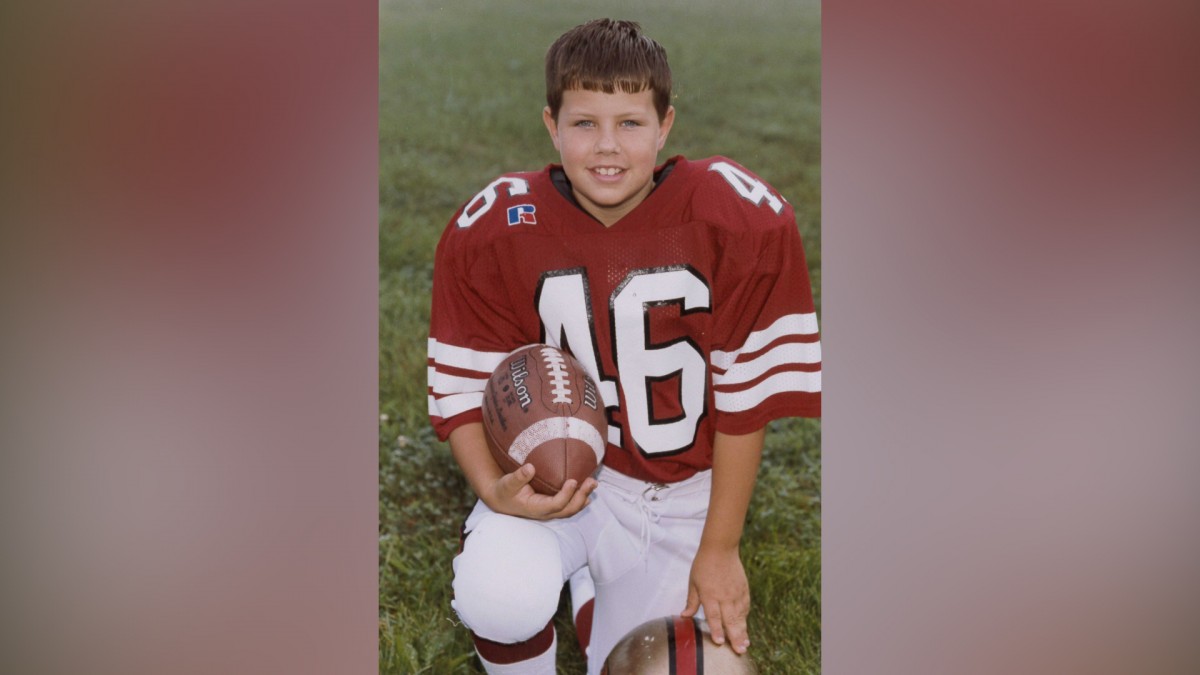 (Photo: Courtesy of Brenda Easter)
(Photo: Courtesy of Brenda Easter)
Football was a family affair. He proudly wore No. 44 just like his dad Myles Sr. did when he was in high school. His dad also coached football at Simpson College and later was the defensive coordinator at Indianola High School.
The Easter family believes Zac suffered his first concussion in fifth grade, though he was never officially diagnosed.
Zac struggled in middle school, which was uncharacteristic of him. He got into trouble with teachers and didn’t always do his homework. The Zac his mother knew so well started to change, but not significantly. It wasn’t surprising, however, to one doctor who suggested he could be acting up because of hormonal changes.
Were those early indicators of CTE, his parents now question?
His first official concussion came shortly before senior year of high school in 2009. Little did Zac know that that would be the start of his silent struggle.
“He suspected something was wrong as early as high school because he never felt quite right,” Brenda said. “As he got worse and worse, he thought, ‘What was wrong with me?’”
Zac was about 14 years old when he started to experience symptoms associated with CTE, which include impulsive behavior, short-term memory loss, blurry vision and speech and language difficulties.
“We still relied on the medical professions to tell us what was going on,” Brenda said.
But after a series of CAT scans, MRIs and other tests, doctors told him nothing was wrong.
The headaches would come and go, just like his complaints.
And as the story goes with so many other high school athletes, Zac eventually put on a mask to conceal the harsh reality the sport comes with.
“I think he was afraid of what they might find,” Brenda said. “I think he was afraid he would have to stop the things he loved to do, which was playing football.”
But the inevitable was just that.
Perhaps the most punishing blow that effectively ended his football career came during the homecoming game versus Ankeny. A towering lineman hit him so hard that athletic trainer Sue Wilson sidelined Zac and prohibited him from returning. It was all for the best.
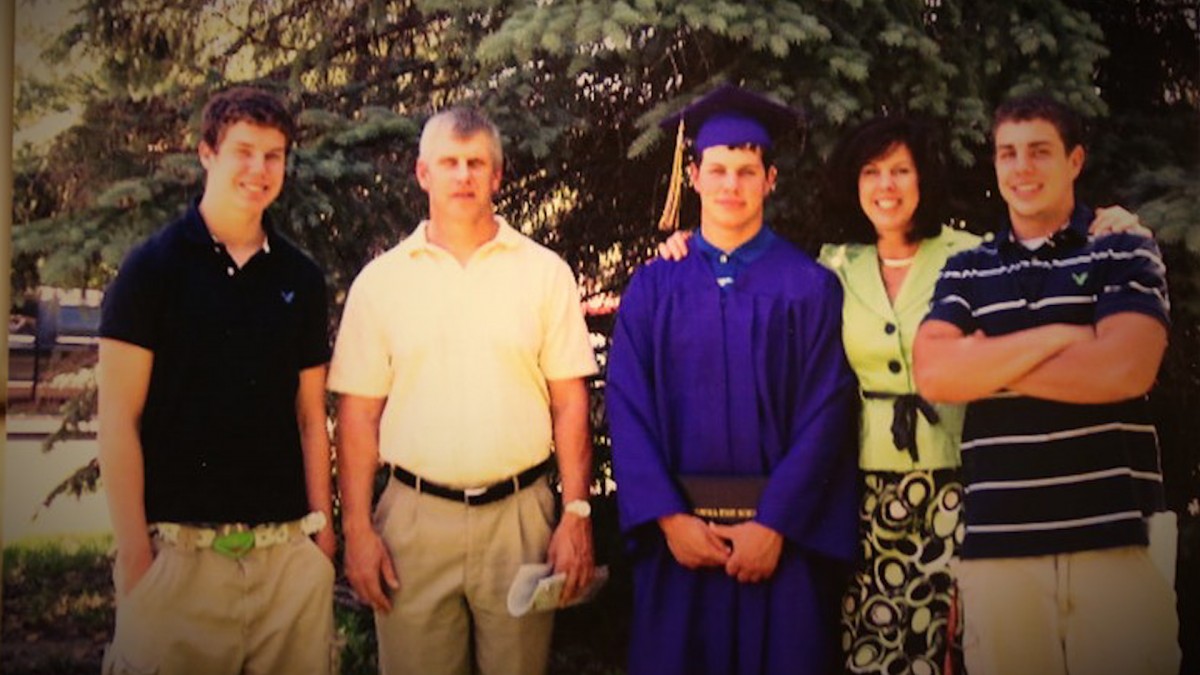 (Photo: Courtesy of Brenda Easter)
(Photo: Courtesy of Brenda Easter)
Ultimately, it was Zac’s senior year and football, as well as wrestling, was done. Being fit and staying in shape was almost part of his identity.
His mother said he socially withdrew, which concerned her. It was time for Zac to focus on something else.
NEW CHAPTER, NEW GOALS
Zac had always wanted to join the Army. Specifically, he wanted to be a ranger for the Army’s Special Operations Forces.
Those were ambitious goals, but his parents suggested that he start classes first. He graduated with a 2.5 grade point average, and he wanted to start fresh.
He signed up for classes at Kirkwood Community College in Cedar Rapids, where he started to work on an associate’s degree. He also enlisted into the Iowa National Guard. It was there that Zac found something that could fulfill his desire to be fit and active.
Still aiming to be an airborne Ranger, Zac went to basic training and graduated at the top of his class. In fact, he was named soldier of the year. He was even offered a contract, but additional training would be required.
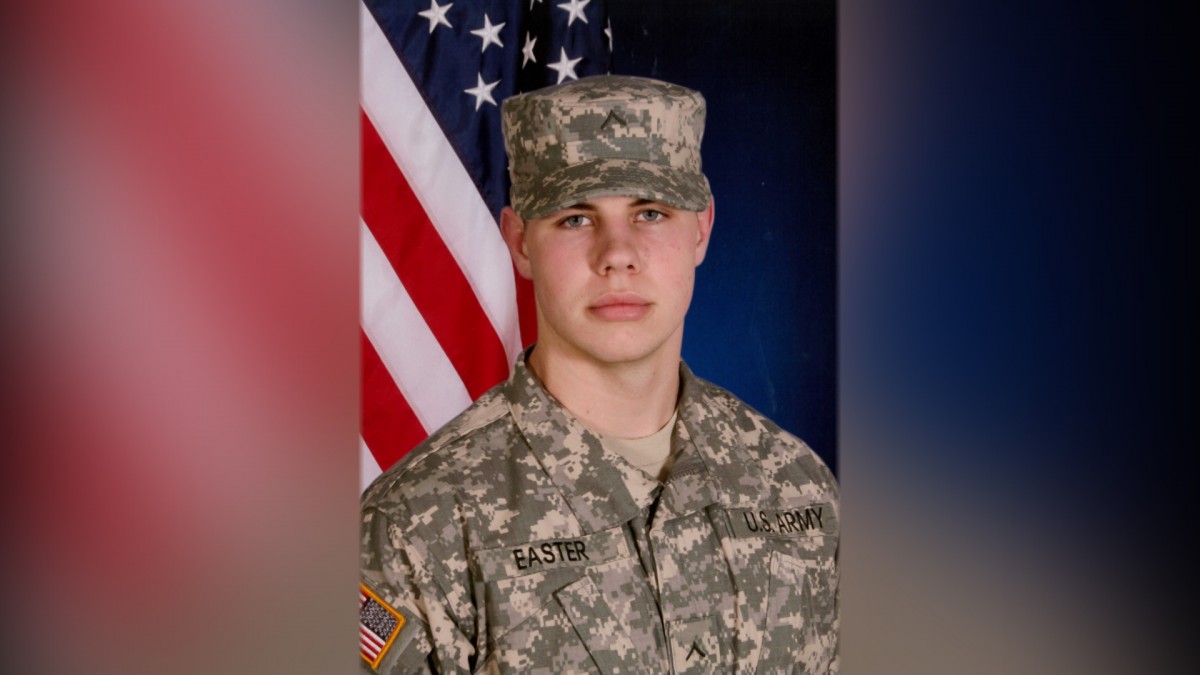 Photo: Courtesy of Brenda Easter)
Photo: Courtesy of Brenda Easter)
Brenda said it was a blessing in disguise that the National Guard didn’t have money to sponsor his training. Zac moved back home, disheartened, but open to starting a new path at Des Moines Area Community College.
The turnaround was almost 180 degrees; he went from having a 2.5 GPA to having straight A’s when he transferred to Grand View University in Des Moines. A finance major, his new goal was to go to graduate school and earn a master’s of business administration. He wanted to be a trader on Wall Street, a “lofty goal,” his mom said.
“If he wanted to do well, he would go over the moon and back if he wanted to excel at something,” Brenda said.
But throughout his senior year of college, his headaches returned. He graduated college with a 3.5 GPA — not bad, considering where he started — but it wasn’t where he wanted to be.
Back to the doctors.
Much to Brenda’s dismay, one medical professional told Zac he might have ADHD. But Zac knew that wasn’t it.
A lightbulb went on.
It could have been a result of the at least five concussions he suffered when playing football — not to mention one while in the National Guard and another in a car accident. He started doing research of his own.
His doctors weren’t sure, so they prescribed him a low dose of Adderall. He took that for a couple of months. But experts now know that Adderall actually exacerbates the condition.
On top of the symptoms he previously experienced, Zac started to feel depressed and anxious, a symptom of the onset of CTE.
“We were let down by medical professionals,” Brenda said. “We don’t blame them; it’s just that they don’t know that much.”
No one knew exactly why Zac started to have blurry vision and slurred speech. Or why his headaches were back. Or why he was becoming socially apathetic. There were so many unanswered questions.
There was a beacon of hope, however, in Ali Epperson, whom he had known since their days at Indianola High School.
Epperson said Zac was “insurmountably different” after suffering those concussions, but she stood by him through dark times.
She noticed he would be social at times, but his mood would suddenly change, a feature often associated with bipolar disorder. One doctor suggested that Zac was bipolar or was borderline schizophrenic, but the Easters were quick to dispel that notion.
“He was always researching something,” Epperson said. That’s when Zac told her about CTE and the doctors he had been seeing.
At this point, Zac had a job at Alternative Brokerage in Clive. But according to his mother, his mind and mouth were not coordinated. He couldn’t hold phone conversations with his clients. He couldn’t hold guard formation in the National Guard.
“He was getting weaker physically and emotionally by the day,” Brenda said.
His 24th birthday was on June 2, 2015. He had seen speech pathologists, cognitive therapists, psychologists, sports medicine professionals and physicians. But, “I knew he wasn’t feeling well,” Brenda said.
The research he had been doing on CTE led him to an eerie conclusion: There is no cure and there is no treatment for it.
A DOWNWARD SPIRAL
For his birthday dinner at Indianola Sports Page Bar and Grill, Zac shared an unsettling confession. He shared his struggle, his pain, his reality.
“We didn’t know the magnitude of what was going on. He wasn’t living with us at the time. It wasn’t like he was sitting right in front of us to watch it unfold,” Brenda said.
Before age 18, Brenda was legally obligated to attend doctors’ appointments. Now that he was 24, she insisted that she accompany Zac on those visits, to which he agreed.
“He was having some emotional dysregulations and he was spiraling out of control,” Brenda said.
But through their encounters, doctors kept treating Zac like a mental health patient as opposed to acknowledging what Zac knew to be CTE. The two are completely different.
Zac hadn’t had a concussion in a while, so there was reason to be skeptical. They thought it could be a virus that made Zac feel the way he described.
His parents saw behavior changes that concerned them, so Zac moved back in with them.
He kept taking the medications, but ultimately stopped because they made things worse.
His research led him to take vitamin C to mitigate inflammation of the brain and to retrain his brain by doing daily tasks, but that proved to be futile. That’s when Zac started to self-medicate with alcohol, something that surprised Brenda because “this is a kid who was very health conscious.” But it’s a typical behavior for people with CTE.
“I knew he was desperate at that moment,” she said. “We watched him very closely because his behavior wasn’t Zac. This was a young man full of lofty goals (turning) into ‘I can’t get out of bed. I drink. I’m trying to kill my pain with something else.’”
One doctor told Zac he would — not could, but would — be penniless, homeless or in a mental institute before he turned 30.
“He wasn’t going to have any of that,” Brenda said. “He knew I would never do that. He didn’t want his mother taking care of him.”
But his mother wasn’t going to give up that easily. In her research, she found a program in California that dealt with soldiers coming back from the Iraq War who had traumatic brain injuries or post-traumatic stress disorder and also dealt with chemical dependency issues. It wasn’t the same as what Zac went through, but she hoped it would offer some sort of healing.
“Maybe this could be something that could give him peace and hope because, at this point, he was losing hope,” Brenda said.
But Zac had already made up his mind. The program wouldn’t help.
And then the words that haunt Brenda came out of his mouth. But she still recounts the story because it’s what he would want.
“He said, ‘Mom, there’s no hope for me,’” Brenda said. “I said, ‘Don’t give up, Zac. I found a program. Let’s just go try it out. It can’t hurt.’
“He stopped me and said, ‘Mom, there’s no hope for me. I want my brain donated to science.’ I said, ‘That’s fine, Zac, but you’re not done with yours.’”
Two weeks later, Zac took a 20-gauge shotgun from his father’s truck and went to Lake Ahquabi. He left an apologetic note to first responders and called the sheriff’s dispatch center to tell them his location.
He then shot himself in the heart.
ZAC’S DYING WISH
Before he died, Zac made clear his final wishes. The following is an excerpt from one of his journals that was published in GQ Magazine:
It’s taken me about 5 months to write all of this. Sorry for the bad grammar in a lot of spots.
I WANT MY BRAIN DONATED TO THE BRAIN BANK!! I WANT MY BRAIN DONATED TO THE SPORTS LEGACY INSTITUE A.K.A THE CONCUSSION FOUNDATION. If you go to the concussion foundation website you can see where there is a spot for donaation. I want my brain donated because I don’t know what happened to me and I know the concussions had something to do with it.
Please please please give me the cheapest burial possible. I don’t want anything fancy and I want to be cremated. Once cremated, I want my ashes spread in the timber on the side hill where I shot my 10 point buck. That is where I was happiest and that I where I want to lay. Feel free to spread my ashes around the timber if you’d like, but just remember on the side hill is where I would like most of my remains. I am truly sorry if I put you in a financial burden. I just cant live with this pain any more.
I don’t want anything expensive at my funeral or what ever it is. Please please please I beg you to choose the cheapest route and not even buy me a burial plot at a cemetary…. I also do not want a military funeral. If there are color guardsmen or anyone else at my funerial or whatever you have I will haunt you forever.
I want levi to keep playing clash of clans on my account. I am close to max have spent a lot of time playing that game. Though you think its stupid, I ask you keep playing it for me when you can and let my fellow clan mates know what happened. My phones passcode is 111111, so that’s six 1’s….
Levi gets my car, it will need a oil change and breaks/tires done her shortly. Please take care of old red. It will need cleaned out as well because I am a slob.
Thank you for being the best family in the world. I will watch over you all and please take my last wishes into consideration. Do not do something I do no want. Just remember, I don’t want a military funeral like grandpas. It is my last wishes and last rights.
I am with the lord now.
-Look, Im sorry every one for the choice I made. Its wrong and we all know it.
His dying wish was CTE Hope.
“It was my last gift I can give to my son,” Brenda said.
The Easter family, along with Epperson, Wilson and Hadden, founded the nonprofit organization, dedicating their resources to CTE research and how to better protect student-athletes.
The organization works with athletes from across the world, some as young as 14 years old.
“The reality is it’s not going away; we want to make it safer,” said Epperson, who serves as the communications director for the group.
Zac’s brain was sent to Omalu’s office, and when results came back, they were anything but shocking: Zac, indeed, had CTE.
Now his mother hopes to raise awareness of the disease after so many doctors told her that her son suffered from something other than what he had known to be true.
“In his mind, it was more important to donate his brain to help somebody else,” Brenda said. “I think he would be very proud. I think he knew that if he asked me to do it, I would. And I think he would say, ‘You guys are doing a great job, but you have to keep going because there are still things to be done.’”
Zac provided clarity of what CTE Hope needed to do and what its focus should be. He wanted athletes to know that it’s OK to let coaches know if they suffer dizzy spells or have a headache and to take themselves off the field.
“Zac should have never continued to play because his brain must have been so traumatized; if he stopped, he would have been alive today because his brain would have healed,” Brenda said.
He never told anyone this, but he was emotionally shot. He would cry himself to sleep, she added.
“Most athletes have a lot of pride,” Brenda said. “They want to do well and they want to be part of the team.”
Zac addressed the pressure to play football and pleasing his father in his journal, writing: “I’ve never really felt good enough for him. I know the remarks he will say. I’m sure he loves me but he’s always had a hard time showing it. I feel like all my concussions were for him in the first place because I just wanted to impress him and feel tough. I regret all that now and wish I never even played sports.”
But Zac’s selfless gift gave even more reason for the co-founders of CTE Hope to uphold their calling.
They are dedicated to helping families dealing with the startling realities of the disease. They advocate for having athletic trainers present at all varsity collision sports games in case an athlete were to be concussed.
But perhaps the most plausible — and at the same time potentially groundbreaking — move that the organization has taken involves a simple spit test.
CHANGING THE GAME
The first order of business for CTE Hope was to raise $1,000 to fund a pilot study at Simpson College in Indianola to determine if biomarkers in an athlete’s saliva can be used to detect concussions.
According to CDC estimates, nearly 1.6 million athletes nationwide suffer from sports-related concussions each year. And that doesn’t account for undiagnosed concussions, which experts believe could be as high as 3.8 million people.
With this new “spit test,” it enables coaches to remove opportunities for their athletes to become a victim of CTE, Brenda said.
Under current Iowa legislation, student-athletes who participate in extracurricular interscholastic activities must:
- Be removed immediately from participating — in practice or during competition — if their coach or official notices signs, symptoms or behaviors consistent with a concussion or brain injury
- Wait until a licensed health care provider trained in evaluating and managing concussions and other brain injuries has evaluated the student and submits written clearance
- Seek medical attention
Concussions, Hadden noted, have been associated with a spike in tau protein in the brain. He hypothesized that if those inflammatory biomarkers can be detected through an athlete’s saliva, athletic trainers or physicians could, in turn, continue to collect those samples until those proteins returned to normal range.
That makes it easier to diagnose a concussion right there on the sideline. And it would only take a cotton swab.
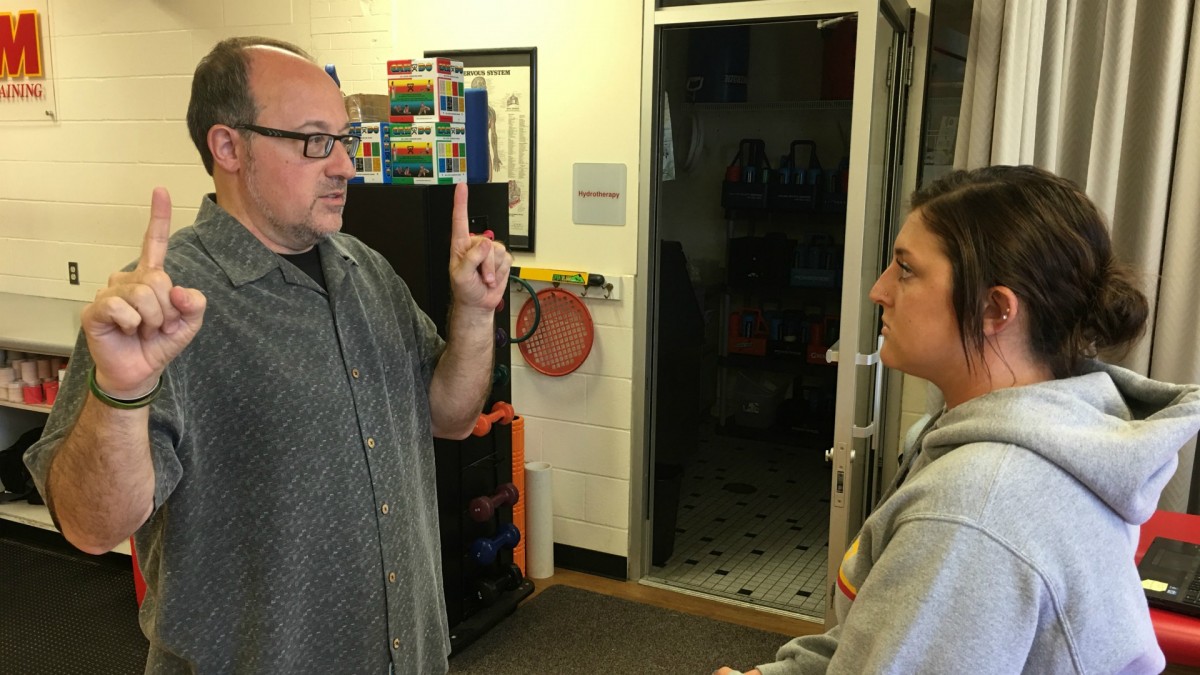 (Photo: Alex Kirkpatrick/The Simpsonian)
(Photo: Alex Kirkpatrick/The Simpsonian)
Hadden, with assistance from Wilson, also an adjunct professor at the institution, started by collecting saliva samples from Simpson’s football and women’s soccer players, and they were able to diagnose three football players who had suffered concussions at home games. Two of the players were able to recover, but the third had a relapse.
It’s much more complicated, though, than just sidelining an athlete should they be diagnosed with a concussion. With constant new research, experts believe the problem is worse than previously thought.
For an athlete, it could be a death sentence for the season, much like that of an ACL tear.
“We could get to the point where an athlete gets concussed in the season and they could be done for the season,” Hadden said. “I don’t think coaches will ever admit that.”
Simpson College is the only known institution in the country working on a device that detects concussions, Hadden said. So why wouldn’t other schools in the Iowa conference jump on the train?
“I think it’s because the bigger schools don’t want to know,” he explained. “If we eventually create this device that says you are concussed, I think a lot of head coaches, especially DI, will think that the healing time will be much longer because they know that when you get a concussion, those cells that are responsible for releasing those markers continue to do that longer than we all thought.”
“I do think that coaches genuinely care about the athletes, but their argument is, ‘Hey, I played football, and so did tens of millions of other Americans who played football,’” he added. “The coaches themselves either experienced several concussions they didn’t report, and I’m sure they know people who didn’t report concussions. They’re fine. And they’re right, but they have a very solid argument.”
HOLDING ON TO HOPE
Former student-athletes are being notified about a possible $70 million concussion settlement by the NCAA that, if approved in federal court, should be seen as a referendum on a culture that pressures athletes to play on, despite chronic head injuries.
The class-action lawsuit claims the NCAA was negligent and failed to protect student-athletes from head trauma: “If you played a NCAA sport at a member school any time prior to July 15, 2016, you may be entitled to free medical screening and may receive free medical testing, known as ‘medical monitoring,’ up to two times over the next 50 years. You do not need to have been diagnosed with a concussion to be a member of the medical monitoring class.”
The NCAA recently imposed a rule prohibiting two-a-day practices, which were commonplace during the preseason for college football teams. Roughly 58 percent of concussions that happen in football occur during the preseason, according to the NCAA’s Sport Science Institute.
Teams are still able to hold two practices a day, but one must be without contact, helmets, pads and conditioning activities; moreover, at least three hours of recovery are required between practices.
The federal class-action lawsuit is pending before the Northern Illinois U.S. District Court.
The lawsuit comes as Iowa schools start a new concussion protocol called REAP this month. It’s designed to bring teachers and parents into the concussion detection and rehabilitation process, whereas previous guidelines focused mainly on coaches detecting concussion symptoms.
Moreover, the Iowa Department of Public Health recently released guidelines on how to manage concussions in a 41-page document on its website. It’s in partnership with the Department of Education and offers further guidance through REAP, which stands for Remove/Reduce, Adjust/Accommodate and Pace.
Among the recommendations, the department says parents shouldn’t wait to have their child checked out for a suspected concussion, schools should provide more training for coaches and staff, and teams should take a step-by-step method to determine when a student can return to play.
In a recent study of 177 deceased former football players, CTE was found in: nearly 90 percent of brains studied, including 110 of 111 brains from former NFL players; 48 of 53 college players; nine of 14 semiprofessional players; seven of eight Canadian Football League players and three of 14 high school players.
The research was published in the Journal of the American Medical Association and was co-authored by McKee, though the results, she said, are admittedly skewed because the brains were donated with suspicions that each patient had symptoms of CTE.
The NFL has long denied a link between concussions and the proven long-term cognitive decline.
Jeff Miller, the league’s senior vice president for health and safety, told the House of Representatives’ Committee on Energy and Commerce in March 2016 that sports-related head trauma can lead to CTE.
And after pressure from legislators, former players and medical professionals, the NFL issued a statement noting the importance of advancing science related to head trauma, and it will “continue to work with a wide range of experts to improve the health of current and former NFL athletes.”
The league also agreed to a $1 billion settlement to compensate former players who had accused it of hiding the risks.
But the reality is, it’s not just an NFL issue; as the Easters’ story indicates, the NFL is just an example of the issue occurring in towns all across America.
“I’m trying to protect the athletes like Zac who only played youth sports, because it’s killing them,” Brenda said. “Until I can figure out how to protect athletes, which we will once we get our device developed, parents need to pay attention vigilantly.”
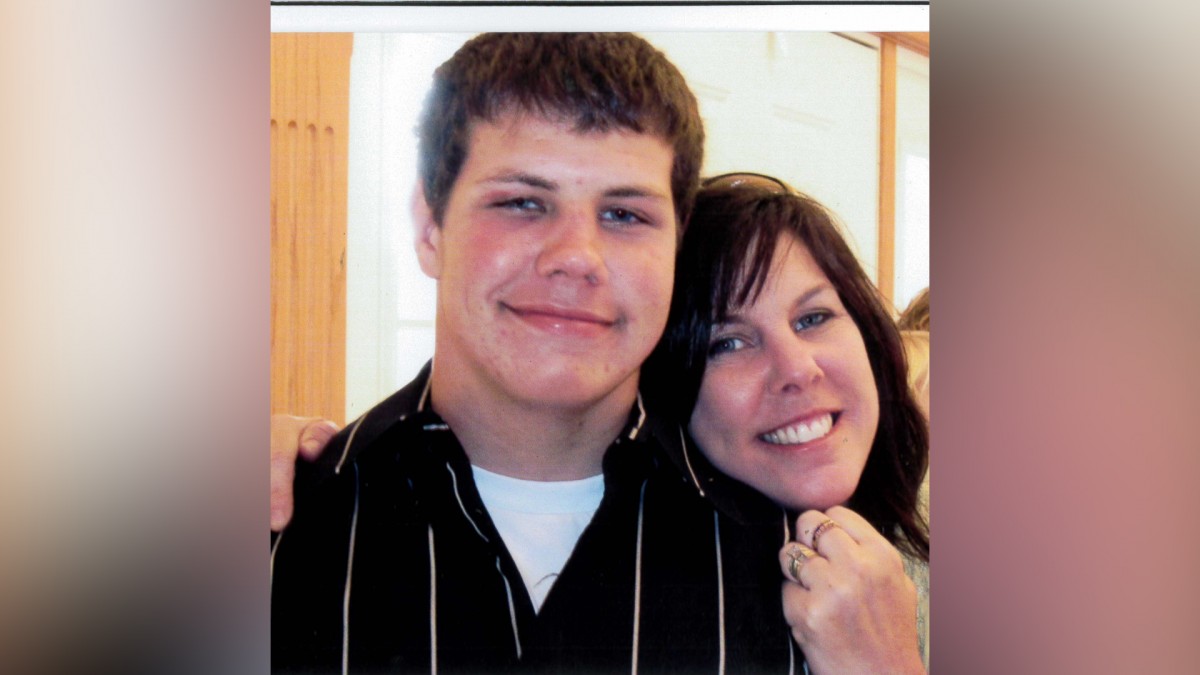 (Photo: Courtesy of Brenda Easter)
(Photo: Courtesy of Brenda Easter)
To be clear, the Easter family is not condemning any contact sports. They grew up with them. It’s about keeping athletes safe.
If there’s one thing Zac wanted, it was to live life to the fullest, as he documented numerous times throughout his journal.
In the end, Brenda is providing one thing bountifully for her son— hope. “I don’t want anyone to believe there’s no hope.”
“It’s hard as a parent to make those decisions,” Brenda said. “You want them to be fulfilled. You want them to excel in the things they love. You want them to be happy and healthy, but is it important to be happy and healthy doing something that could kill them? The answer is no.”
The Easter family and CTE Hope are keeping Zac’s memory alive and keeping the sport of football an American tradition, but calling for major changes to the system to better protect athletes. It’s what he wanted most.
As Zac wrote in his journal: “I ask anyone who ever has to read this to please help spread the word about how dangerous concussions are and to try and help support the effort to make football a safer sport. I’m sure someone out there will read this and realize that he has gone through some of the same similar shit as me. Whoever you are, I beg you to get help and don’t live the self-destructive life that I did.”
___
The Simpsonian’s Jetstream Team consists of four reporters and staff members dedicated to in-depth and investigative reporting on Simpson College’s campus and student-related subjects.
If you have a tip, please contact these representatives of Jetstream:
Alex Kirkpatrick, Jetstream Editor
Alex is a senior majoring in multimedia journalism and minoring in French.
Email: [email protected]
Emily Carey, Digital Media Manager
Emily is a junior majoring in multimedia journalism and theater.
Email: [email protected]
Randy Paulson, Senior Staff Reporter
Randy is a junior majoring in multimedia journalism and Spanish.
Email: [email protected]
Austin Hronich, Director of Photography
Austin is a junior majoring in sports communication.
Email: [email protected]



